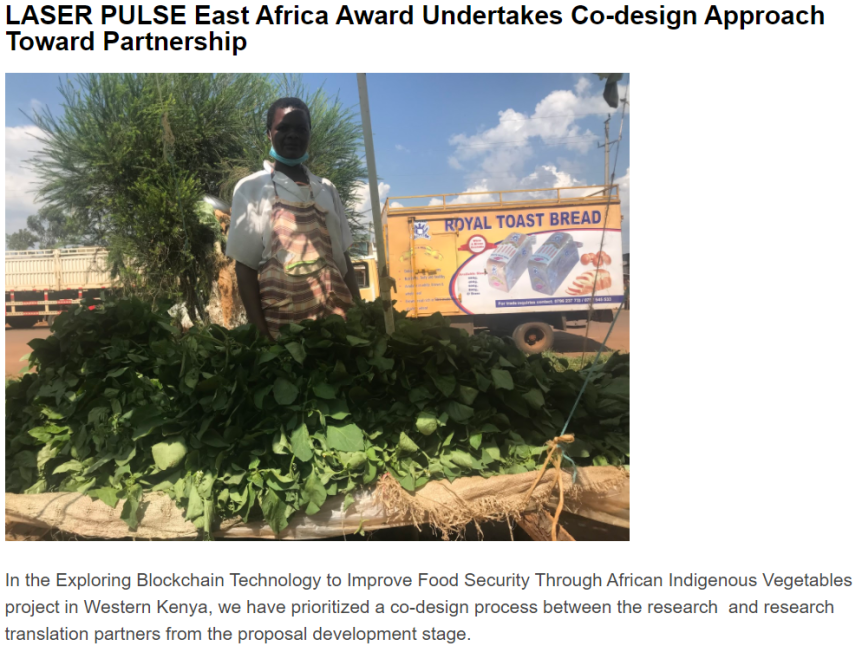The USAID LASER PULSE Network just released the short story below on how we implemented a co-design process with our partners – AgUnity and Egerton University in Kenya – for our project entitled “Exploring Blockchain Technology to Improve Food Security Through African Indigenous Vegetables in Western Kenya.”
The story talks about our desire to blend the research and translation process from the beginning of our proposal development for the following three reasons:
(1) We expected research activities to bring up new questions that would need to be addressed to produce an impactful research translation product. The research team members are able to return to the field to get answers for the research translation team to continue to refine the app.
(2) Collaboration and partnership are essential for impact. Development in general must continue to break down silos between disciplines and professions in order to meet the needs of the individuals we are trying to serve through this research. Collaboration facilitates the rapid problem solving and creativity that impact generation requires.
(3) Working collaboratively is a lot of fun! It stimulates passions and shared interests, facilitates out of the box thinking, and learning. So far, we have been able to provide training to each other, talk about new and innovative ways to address nutrition, discuss unique avenues to scale the project and ensure sustainability, and share our own passions and interests in travel, food, and family.
Source



